Unveiling the Enigmatic Pomfret: A Deep Dive into the Ocean’s Silvery Marvel
Beneath the shimmering surface of the world’s oceans swims a creature of remarkable elegance and ecological significance: the Pomfret. Often recognized for its distinctive body shape and delicious flavor, this fascinating marine fish holds a wealth of biological secrets and plays a vital role in both marine ecosystems and human cultures. Join us on an exploration of the Pomfret, from its evolutionary journey to its intricate interactions with the ocean environment and humanity.
What Exactly is a Pomfret?
The term “Pomfret” generally refers to several species of marine fish belonging primarily to the family Bramidae, also known as the pomfrets or sea breams. These are not to be confused with freshwater pomfrets, which are entirely different species. Marine pomfrets are characterized by their deep, compressed bodies, often with a silvery or dark coloration, and powerful, forked tails. They are swift swimmers, perfectly adapted for life in the open ocean.
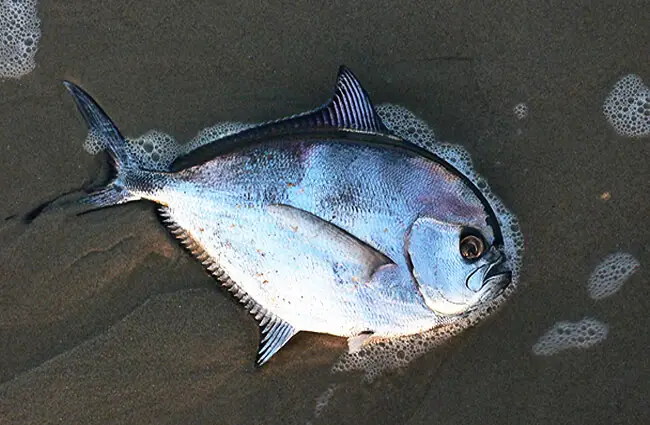
Where Do Pomfrets Call Home? Their Diverse Habitats
Pomfrets are truly global citizens of the ocean. Their habitat spans a vast range, primarily in tropical and subtropical waters, but some species extend into temperate zones. They are predominantly pelagic fish, meaning they live in the open ocean, away from the coast and seabed. However, their depth preferences can vary significantly among species.
- Oceanic Wanderers: Many Pomfret species are found in the open waters of the Atlantic, Indian, and Pacific Oceans.
- Depth Diversity: While some species inhabit shallower coastal waters, others are known to venture into deeper mesopelagic (twilight zone) and even bathypelagic (midnight zone) depths, sometimes hundreds of meters below the surface.
- Temperature Preferences: They generally prefer warmer waters, which dictates their distribution across the globe.
- Schooling Behavior: Pomfrets often form schools, which provides protection from predators and aids in foraging efficiency.
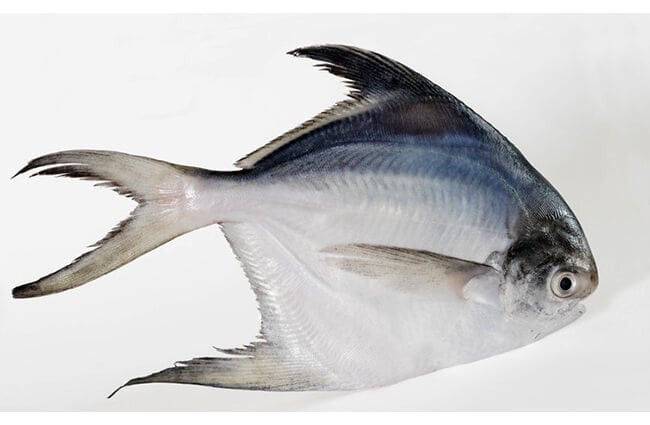
A Glimpse into Pomfret Evolution: A Journey Through Time
The family Bramidae belongs to the order Perciformes, one of the largest and most diverse orders of ray-finned fish. Their evolutionary history suggests a lineage adapted for life in the open ocean. Fossil records, though sometimes sparse for pelagic species, indicate that fish resembling modern pomfrets have been present in marine ecosystems for millions of years. Their streamlined bodies, powerful fins, and keen senses are all adaptations honed over eons to thrive in the dynamic and often challenging environment of the open sea. Studying their genetics helps scientists trace their diversification and relationships with other deep-sea and pelagic fish families.
What’s on the Menu? The Pomfret’s Diet
Pomfrets are opportunistic feeders, and their diet can vary depending on the species, their size, and the availability of prey in their specific habitat. Generally, they are carnivorous, preying on a variety of smaller marine organisms.
- Primary Prey: Their diet often includes small fish, squid, and crustaceans.
- Zooplankton Consumers: Younger or smaller Pomfrets may feed heavily on zooplankton, tiny marine animals that drift with ocean currents.
- Active Hunters: Their powerful tails and swift movements make them efficient predators in the open water, allowing them to chase down fast-moving prey.
The Circle of Life: Mating and Reproduction in Pomfrets
The reproductive strategies of Pomfrets, like many pelagic fish, involve broadcasting eggs and sperm into the open water. This method, known as pelagic spawning, relies on the sheer number of gametes released to ensure some survival.
- Spawning Seasons: Reproduction often occurs during specific seasons, influenced by water temperature and food availability.
- Egg Release: Females release numerous small, buoyant eggs into the water column.
- External Fertilization: Males simultaneously release sperm, leading to external fertilization.
- Larval Development: The fertilized eggs drift with currents, eventually hatching into larval fish. These larvae are typically very small and undergo several developmental stages before maturing into juvenile Pomfrets.
- Growth and Maturation: Pomfrets grow relatively quickly, reaching sexual maturity within a few years, depending on the species and environmental conditions.
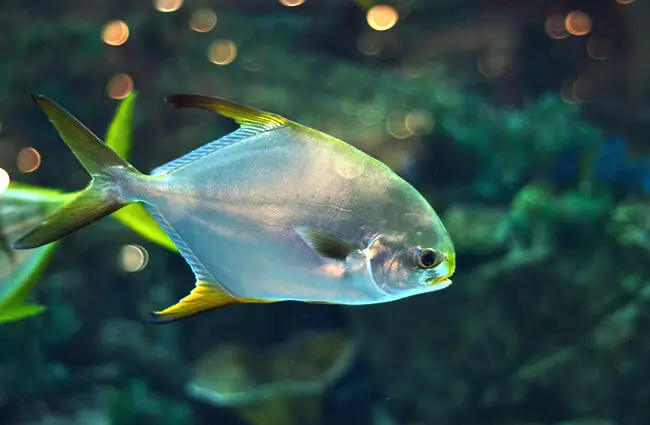
Pomfrets in the Grand Scheme: Ecosystem Contributions and Interactions
Pomfrets play a crucial role in the marine food web, acting as both predators and prey. Their presence helps maintain the balance of oceanic ecosystems.
- Predator Role: By consuming smaller fish, squid, and crustaceans, Pomfrets help control the populations of these species.
- Prey Role: Juvenile and adult Pomfrets, in turn, become a food source for larger marine predators, including sharks, tuna, and marine mammals like dolphins and whales. This makes them an important link in the transfer of energy through the pelagic food chain.
- Nutrient Cycling: As they feed and move through different depths, Pomfrets contribute to the cycling of nutrients within the water column.
Pomfrets and Humanity: Culture, Cuisine, and Conservation
Pomfrets have a long and significant history of interaction with humans, particularly in coastal communities around the world.
- Culinary Delicacy: Many Pomfret species are highly prized as food fish, especially in Asian and Mediterranean cuisines. Their delicate flavor and firm, white flesh make them a popular choice for grilling, frying, and curries. Species like the Silver Pomfret (Pampus argenteus) and Black Pomfret (Parastromateus niger) are particularly sought after.
- Economic Importance: Fisheries targeting Pomfrets provide livelihoods for countless fishermen and contribute significantly to the economies of many coastal nations.
- Aquaculture Potential: Due to their high market value, there is growing interest and research into the aquaculture of certain Pomfret species to meet demand and reduce pressure on wild stocks.
- Conservation Concerns: Like many commercially important fish, some Pomfret populations face challenges from overfishing and habitat degradation. Sustainable fishing practices and effective management are crucial for ensuring the long-term health of Pomfret stocks and the ecosystems they inhabit.
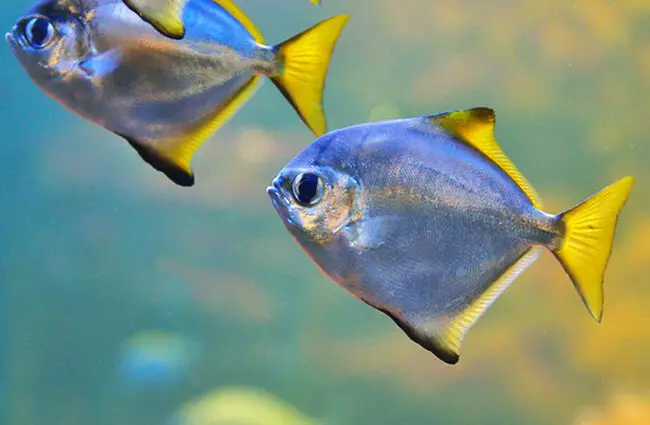
Finding Pomfrets in the Wild: A Guide for the Enthusiastic Observer
For the dedicated animal lover or aspiring zoologist hoping to observe Pomfrets in their natural habitat, it is important to understand their pelagic nature. Unlike reef fish, Pomfrets are not typically found near shore or in shallow, easily accessible waters.
- Where to Look:
- Open Ocean: Your best bet is in the open waters of tropical and subtropical oceans.
- Offshore Fishing Expeditions: Joining deep-sea fishing charters or scientific research cruises offers the highest chance of encountering them.
- Diving in Pelagic Zones: Experienced divers venturing into blue water or offshore environments might spot them, though this requires specialized training and safety protocols.
- How to Spot Them:
- Schooling Behavior: Look for large schools of fish, often indicated by bird activity or surface disturbances.
- Sonar/Fish Finders: On boats, sonar equipment can detect schools of fish in the water column.
- Observation from a Distance: If you are lucky enough to encounter a Pomfret, observe it quietly and from a respectful distance to avoid disturbing its natural behavior.
Encountering a Pomfret: What to Do (and Not Do)
Given their pelagic nature, a direct encounter with a live Pomfret by a “hiker” (interpreted here as a beachcomber or coastal visitor) is rare, unless the fish is stranded. For divers or those on boats, the advice is straightforward:
- If you find a stranded Pomfret on the beach:
- Do Not Touch: Avoid direct contact with the fish.
- Contact Authorities: Immediately notify local marine wildlife authorities, fisheries departments, or environmental organizations. They are best equipped to assess the situation and provide assistance.
- Provide Information: Note the exact location, time, and condition of the fish.
- If you encounter a live Pomfret while diving or boating:
- Observe from Afar: Maintain a respectful distance.
- Avoid Disturbance: Do not chase, touch, or attempt to feed the fish.
- Appreciate the Moment: Enjoy the rare opportunity to witness these magnificent creatures in their natural environment.
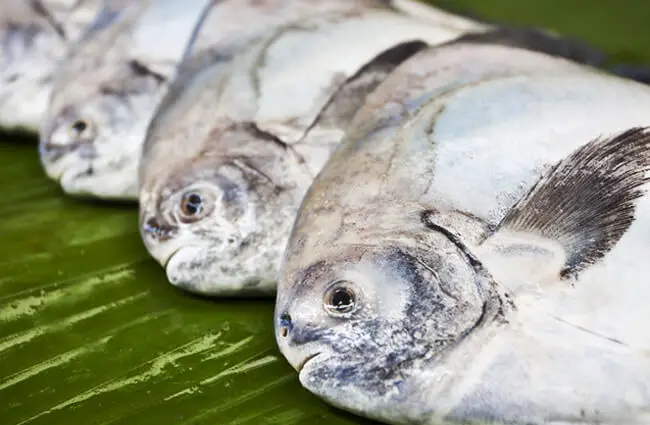
Caring for Pomfrets in Captivity: A Zookeeper’s Guide
Keeping Pomfrets in a captive environment, such as a public aquarium, presents unique challenges due to their pelagic nature and size. A zookeeper caring for Pomfrets would need to focus on replicating their natural oceanic environment as closely as possible.
- Aquarium Requirements:
- Tank Size: Extremely large, public-scale aquariums are essential. Pomfrets are active swimmers and require vast open spaces to thrive. Small tanks are entirely unsuitable.
- Water Quality: Maintaining pristine marine water quality is paramount. This includes stable salinity (around 34-35 ppt), temperature (species-specific, typically tropical to subtropical ranges), pH (8.1-8.4), and low levels of nitrates, nitrites, and ammonia. Robust filtration systems are a must.
- Water Flow: Strong, consistent water flow mimicking ocean currents is beneficial for their health and natural behavior.
- Diet and Feeding:
- Varied Diet: A diverse diet of high-quality marine-based foods is crucial. This might include chopped fish, squid, shrimp, and commercially prepared pellets designed for pelagic carnivores.
- Feeding Frequency: Multiple smaller feedings throughout the day are often better than one large meal.
- Nutritional Supplements: Vitamin and mineral supplements may be necessary to ensure a balanced diet.
- Social Environment:
- Schooling Instincts: Pomfrets are schooling fish, so they should ideally be kept in groups to reduce stress and encourage natural behavior.
- Tank Mates: Choose tank mates carefully. They should be similarly sized pelagic species that are not aggressive and do not compete excessively for food or space.
- Health Monitoring and Enrichment:
- Daily Checks: Regular observation for signs of stress, disease, or injury is vital. This includes monitoring swimming patterns, appetite, and physical appearance.
- Water Parameter Testing: Daily or weekly testing of water parameters is non-negotiable.
- Environmental Enrichment: While complex structures are not typical for pelagic fish, ensuring ample swimming space and appropriate water flow serves as their primary enrichment.
- What to Avoid:
- Small Tanks: Never house Pomfrets in tanks that do not provide ample swimming room.
- Poor Water Quality: Fluctuating or substandard water parameters will quickly lead to stress and disease.
- Aggressive Tank Mates: Avoid species that might harass or injure Pomfrets.
- Overfeeding or Underfeeding: Both can lead to health issues.
- Sudden Changes: Minimize sudden changes in water parameters, lighting, or environment.
Fascinating Facts About Pomfrets
Here are some intriguing tidbits about these ocean dwellers:
- Deep-Sea Divers: Some Pomfret species, like the Pacific Pomfret (Brama japonica), are known to undertake significant vertical migrations, moving between deep waters during the day and shallower waters at night.
- “Butterfish” Misnomer: In some regions, certain Pomfret species are colloquially called “butterfish” due to their rich, buttery flavor and texture, though they are distinct from true butterfish families.
- Powerful Swimmers: Their crescent-shaped caudal (tail) fin is a hallmark of fast-swimming pelagic fish, allowing them to cover vast distances.
- Global Distribution: The family Bramidae boasts a wide distribution, with different species dominating various oceanic regions.
- Commercial Value: Pomfrets are among the most economically important fish in many parts of Asia, fetching high prices in markets.
- Distinctive Shape: Their highly compressed, deep body shape is quite unique among many pelagic fish, making them easily recognizable.
The Enduring Allure of the Pomfret
From their mysterious lives in the open ocean to their significant role in human diets and economies, Pomfrets are truly remarkable fish. Understanding their biology, ecology, and interactions with the world around them not only satisfies our scientific curiosity but also underscores the importance of marine conservation. As we continue to explore and appreciate the wonders of our oceans, the Pomfret stands as a shining example of the intricate beauty and delicate balance of marine life, urging us to protect these vital ecosystems for generations to come.

![Red Angus Closeup of a beautiful Red Angus cowPhoto by: U.S. Department of Agriculture [pubic domain]https://creativecommons.org/licenses/by/2.0/](https://animals.net/wp-content/uploads/2020/03/Red-Angus-4-238x178.jpg)




![Red Angus Closeup of a beautiful Red Angus cowPhoto by: U.S. Department of Agriculture [pubic domain]https://creativecommons.org/licenses/by/2.0/](https://animals.net/wp-content/uploads/2020/03/Red-Angus-4-100x75.jpg)

